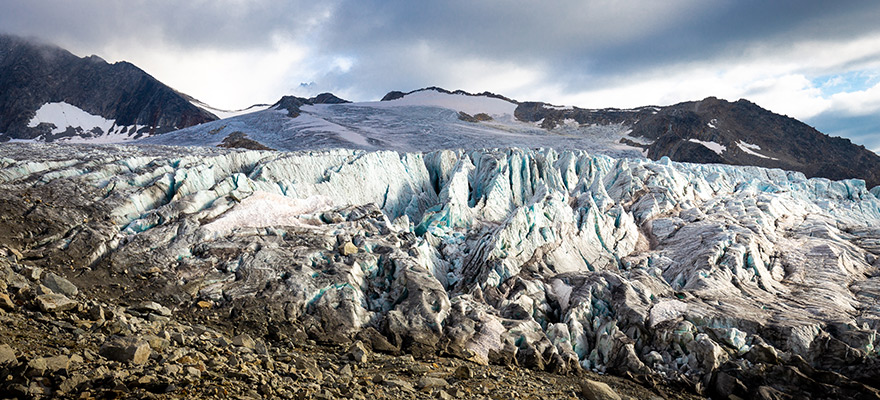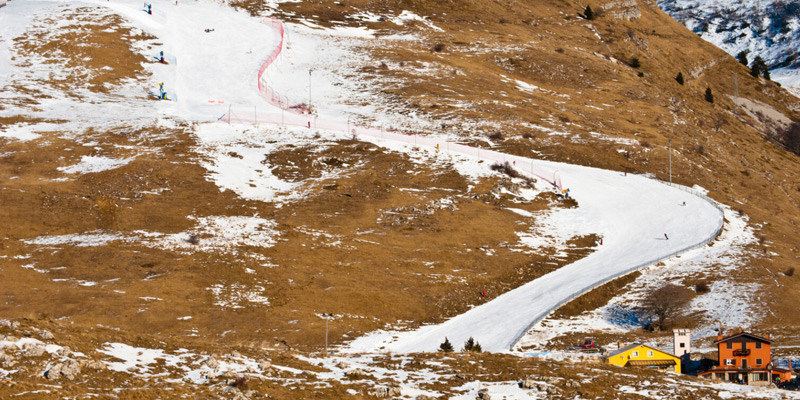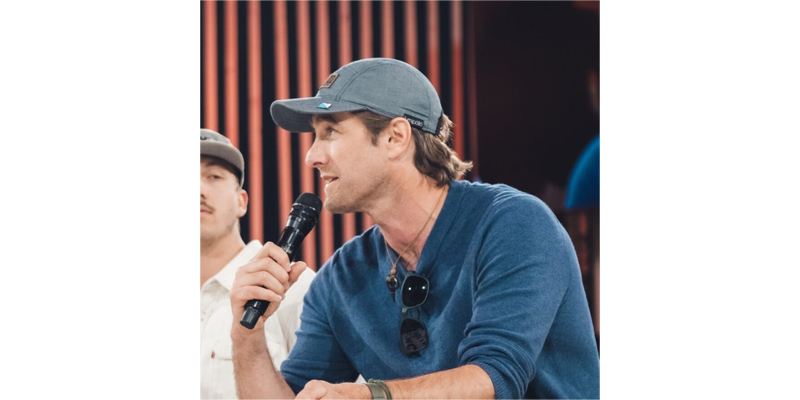Vote For Winter | Protect Our Winters

Above: Glacial retreat continued at a record pace in 2023
Amidst all the excitement for the coming ski season, the climate debate continues to loom large. We sat down with Dan Yates from Protect Our Winters to discuss the critical next phase.
How has the climate debate evolved since last winter?
The most recent data says that we’ve now used 50% of our available carbon budget if we want to stand a [good] chance of meeting the 1.5 degrees warming set out at the Paris Agreement. In the last two years, we’ve used half the carbon that we have left.
When’s that target deadline?
The idea is to reach net zero by 2050. But actually, if we continue emitting as we are now and then stop emitting anything in 2049, we’re still going to miss that 1.5 degrees. The reason it feels so critical is that all of the decisions that are going to affect [the outcome] are going to be happening in the next political cycle.
What are the key events you’re looking at?
Our sights are firmly focused on the EU elections next June. The next parliament will have the final chance to make these [key] decisions. It’s the same with the UK – we’re probably looking at an election in autumn 2024, and the next government will really decide whether the UK is meeting any of its targets. And the US has got [its own] election next November as well. These elections are critical for us.
Do you tell people how to vote?
We will always be bipartisan in our outreach, so we’re always trying to reach out to politicians of all sides and make a positive request. But we’re going to release a POW white paper at the ISPO trade show in November [which will outline] what we expect from future MEPs that are being elected. Then we’ll be urging our community to go out and vote with that in mind. We’re not telling them who to vote for, but we’re telling them the policies that they should be voting for.
Aside from the political debate, how has the climate itself actually changed this year?
July 2023 was the hottest month ever recorded globally. This year has also seen the highest surface sea temperatures ever, and the lowest extent of sea ice. It has been an unprecedentedly hot year, following on a trail of previously unprecedented hot years in [the past] decade.
Fortunately, we had quite a wet and snowy end of the season that helped the glaciers a little bit [in the spring], but the recent heat has undone that. Glaciers tend to be impacted less by how good the winter is, and more by how hot summer is. And we’ve been seeing not just glaciers retreating in the normal way, but quite significant collapses as well – the most famous one being the Marmolada in Italy last year, where literally a third of the glacier was lost.

Above: Many ski resorts face an uncertain future.
What activities have you got coming up this winter?
We’re hosting the first ever ski hard goods climate summit in Salzburg this September. We’re going to have representatives from the manufacturers responsible for 75% of the skis and snowboards that are made in the world, and from the major material suppliers and retailers; around 120 delegates. We’ll be spending two days talking about how we move forward as an industry – not only reducing the climate impact of the production of ski equipment but how we can be seen as a role model on climate action as opposed to part of the problem. We need to remove the competitive nature from the sustainability argument among these companies and move it towards a collaborative approach.
Is that competitive element never a positive thing, if people are fighting to be greener than the next brand?
I think it leads to accelerated claims which are not necessarily always there. And you’re always going to do better collaboratively than you are individually, particularly when it comes to things like purchasing good materials. We see that in the textile industry already. For instance, Smartwool and Icebreaker have moved over to collaborative purchasing of merino wool because it allows them to support these regenerative agricultural farms.
What else is happening?
We’ve got our educational programmes that we run. By the end of the year, we’ll have trained facilitators to deliver athlete training across much of Europe. And we’re rolling out our Hot Planet Cool Athlete programme, where an outdoor sports athlete – a climber, skier, snowboarder or mountain biker – visits schools alongside a power educator. There’s one for 11 to 14-year-olds and one for 14 to 16-year-olds. They learn all about basic climate science, what they can do to advocate and how they can become the advocates of the future.
How can the reader of this magazine get involved with POW?
Every POW chapter has its own channel that people can follow. We’re in 10 different countries across Europe; each chapter has its own newsletter and Instagram. You can get in touch and find a way to volunteer or send donations to support the work that they’re doing. You can also talk to your company about partnering with POW in the business. But as I say, with these elections coming up, the most important thing that you can do is vote. Use your voice.







